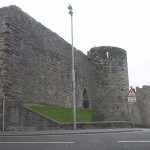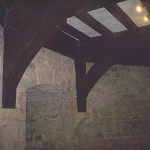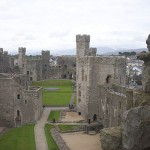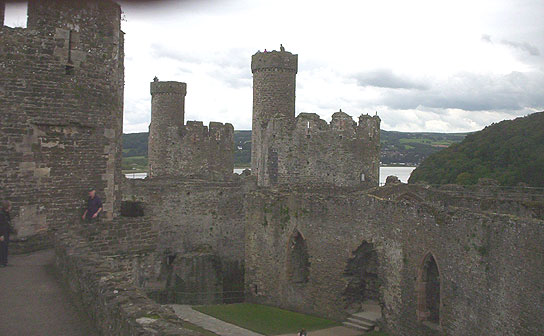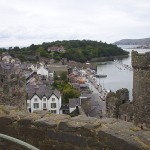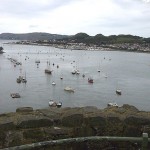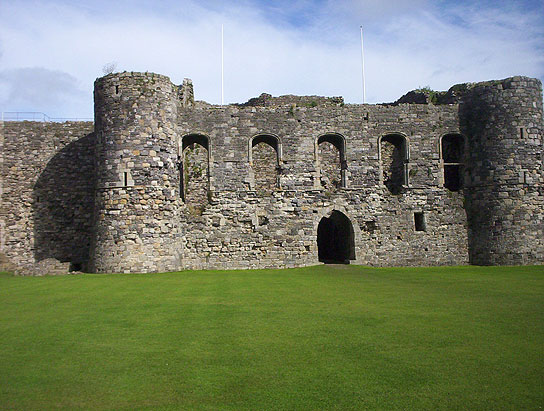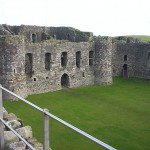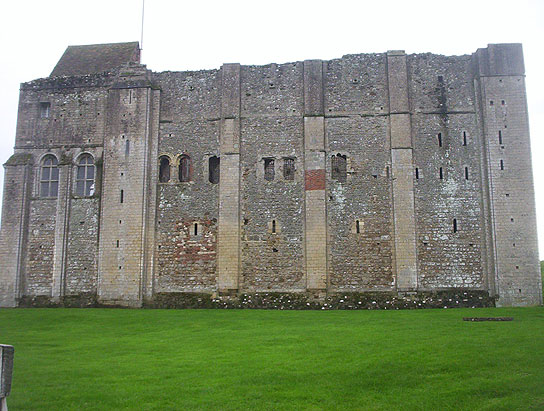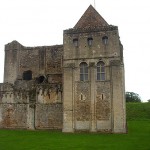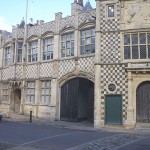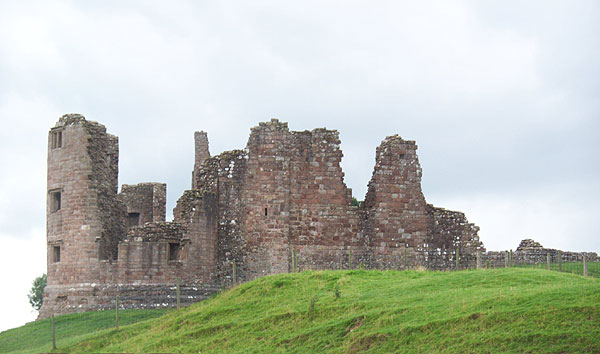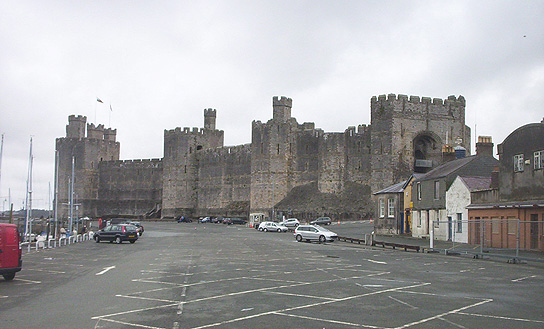
CADW.
Caernarfon castle was built for Edward I by his gifted castle designer, Master James of St George, starting in 1283. The walls of the castle and the connected new English town were substantially complete by 1285. It was built to include a royal residence. The Welsh over-ran town and castle in 1294, the lack of wall between town and castle proving a fatal omission. The English re-took it, and by 1330 work to complete the castle had ceased. It last saw action in the Civil War, and repairs were carried out in the 19th century.
The castle is huge, and towers to an impressive height over the town and harbour, still looking fairly complete. Like Beaumaris, it has walls honeycombed with passages which can be explored. At the site of the kitchens, the remains of ovens and piped water supplies can be seen. Some towers have been re-roofed and contain exhibitions. I climbed to top of one of the several watch-towers for a vertiginous view of the surroundings. Inside one of the thick walls, a chapel can be seen.
This is one of the finest of the Welsh castles. Well worth a visit if you are interested in castles.
What next? There are sections of the Caernarfon town wall nearby, also the Welsh Highland railway terminus, and the Roman fort of Seguntum is on the outskirts.
